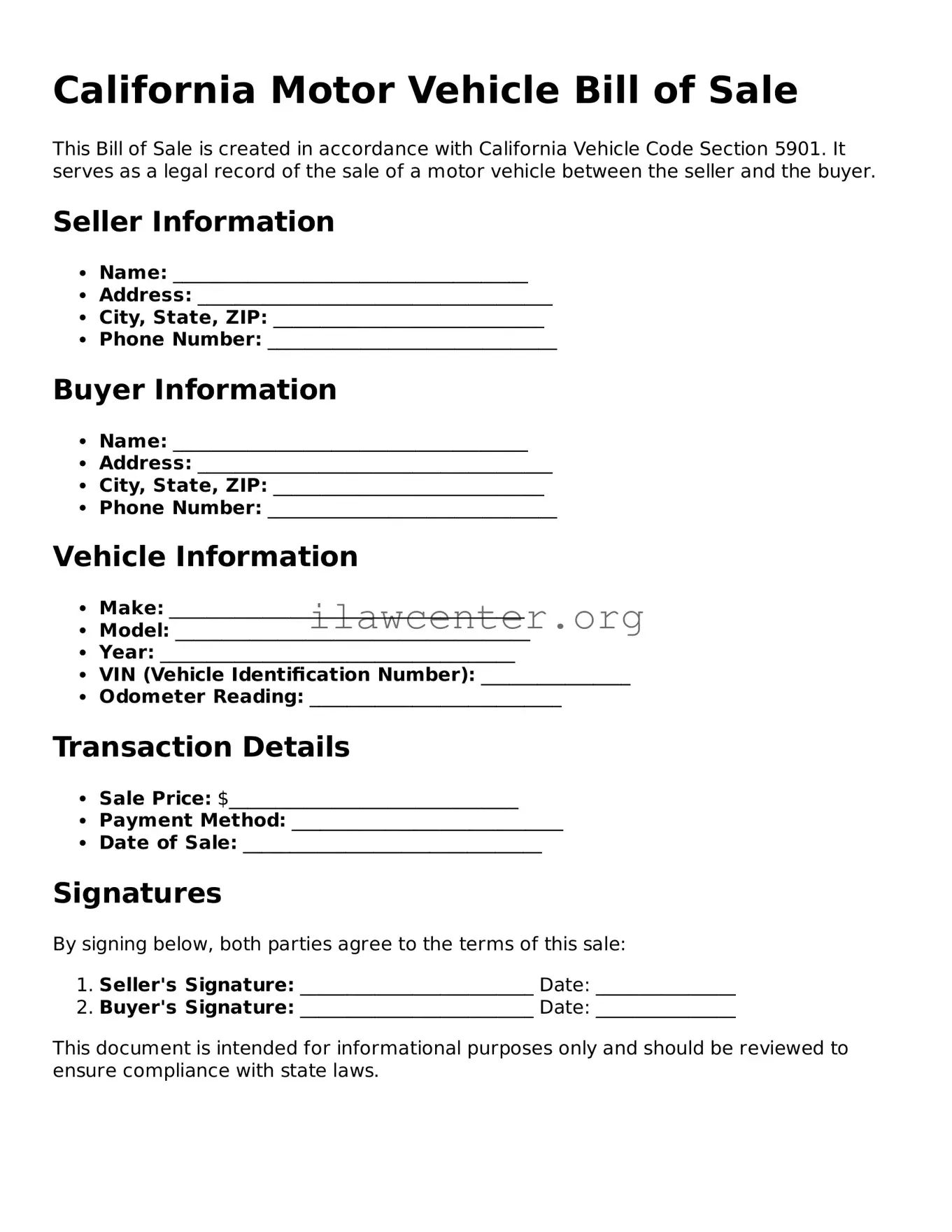Instructions on Utilizing California Motor Vehicle Bill of Sale
When you're ready to complete the California Motor Vehicle Bill of Sale, you'll be taking a significant step in the process of transferring ownership of a vehicle. This form is crucial for documenting the transaction between the seller and buyer, ensuring that all necessary information is clearly understood. Once filled out, you'll typically give a copy to the buyer while keeping one for your records.
- Obtain the Form: You can find the California Motor Vehicle Bill of Sale form online or through various DMV offices.
- Fill in the Date: Write the date of the sale at the top of the form.
- Seller Information: Provide the seller’s full name and address. This helps identify who is selling the vehicle.
- Buyer Information: Enter the buyer’s full name and address, just like you did for the seller.
- Vehicle Information: Include detailed information about the vehicle, such as the make, model, year, color, vehicle identification number (VIN), and license plate number.
- Sale Price: Clearly state the sale price of the vehicle. This is important for both parties for tax purposes.
- Odometer Reading: Record the odometer reading at the time of sale. This indicates how many miles the vehicle has been driven.
- Signatures: Both the seller and the buyer must sign the form to confirm the agreement and completion of the sale.
- Items Included: If there are any items included in the sale with the vehicle (like a spare tire or tools), list them as well for clarity.
After filling out the form, ensure that both parties have signed it. Each participant should keep a copy for their records. This keeps everything organized and provides proof of the sale, which may be needed for future reference, like vehicle registration or tax purposes.
